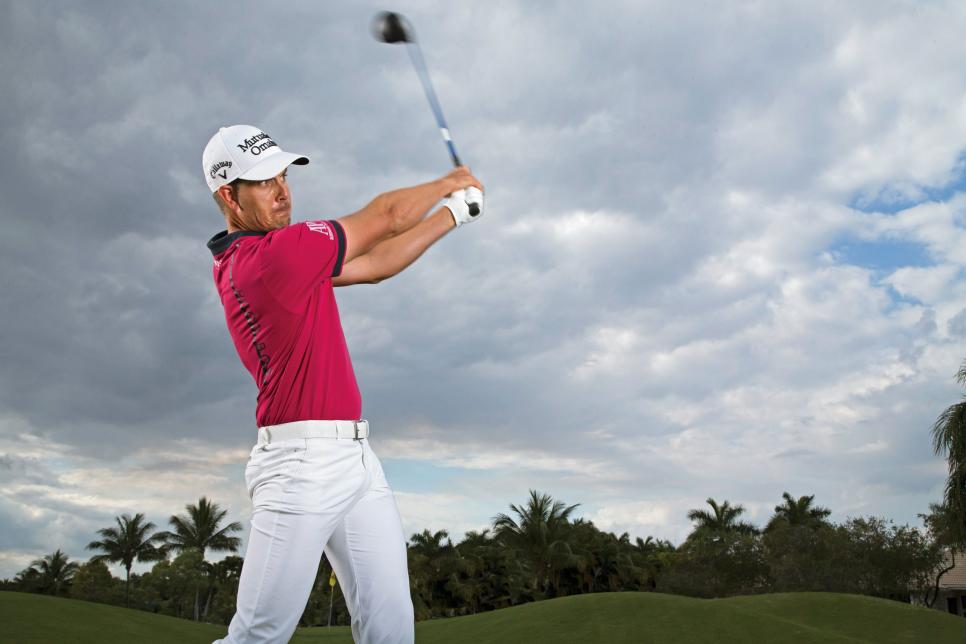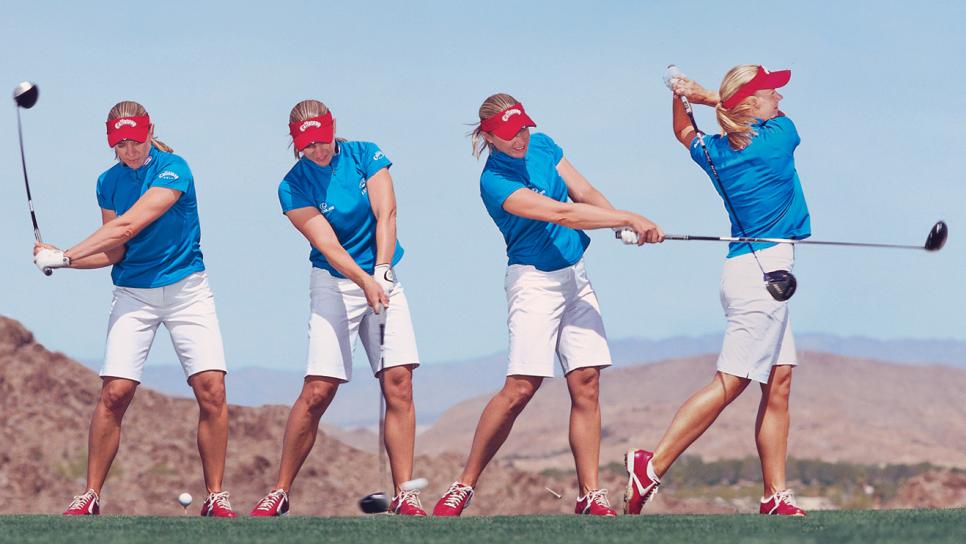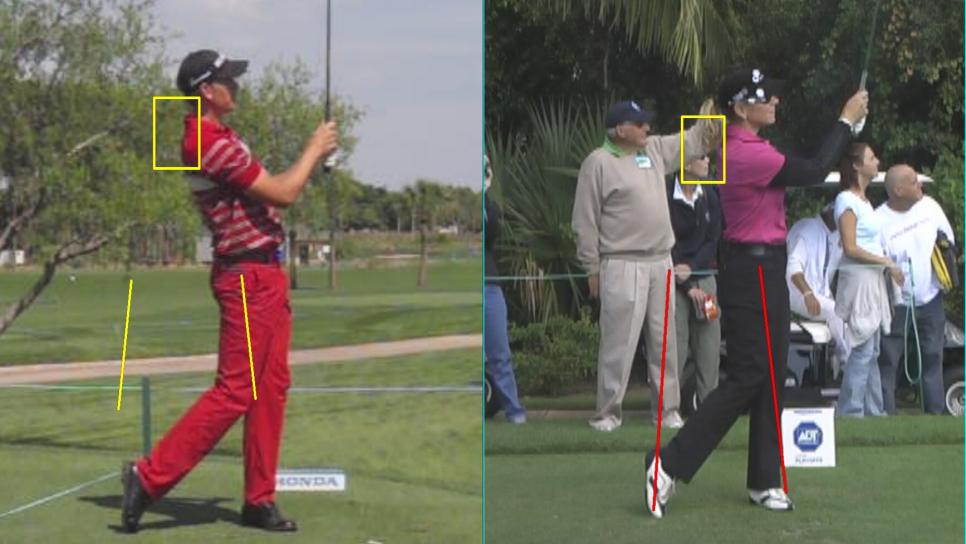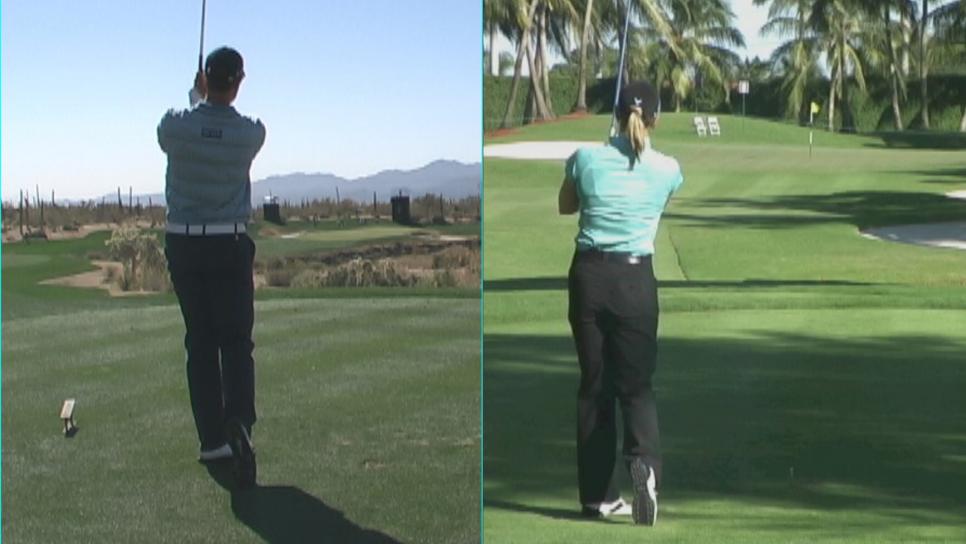Instruction
The Remarkable Swing Similarities Between Swedes Henrik Stenson & Annika Sorenstam
I have been teaching and studying the golf swing for more than 40 years, and there are very few swings at the top level that I have not seen. There are almost no two swings in the professional world that are identical, but the swings of Henrik Stenson and Annika Sorenstam are the closest I have ever studied. Obviously, both are extremely sound and effective. Stenson is the current British Open champion and his fellow Swede is a 10-time major champion. They were taught the same system through the Swedish Golf Federation at about the same time. The swings developed during the critical junior years remained with them, as you will see.
A frame-by-frame photo comparison is astonishing, from the setup to the finish:
• They both obviously rock to the right.
• Their shaft positions are nearly identical throughout the swing.
• Their heads turn early toward the target at impact.
• They have the exact same finish, with a straight back and their hips and shoulders square to the target.

Both Stenson and Sorenstam are good athletes, strong and fit, and have aggressive swings. As a child, Annika excelled in several sports. She was a nationally ranked junior tennis player, played soccer for her hometown team, and was such a good skier that the coach of the Swedish national ski team suggested the family move to northern Sweden to improve her skiing year round. We can be thankful that at age 12 she switched to golf and later played on the Swedish National Team from 1987 to 1992. She played college golf at the University of Arizona and turned professional in 1992. Her longtime coach is Henri Reis.

Similarly, Stenson was a top soccer and badminton player early in his life. Then thankfully he discovered golf. His first round was at age 12. A natural left-hander, he learned to play golf right-handed and was a 5-handicap by age 15, a late-bloomer by today’s standards. (So interestingly, in last week’s final round at Troon, we had a natural right-hander—Phil Mickelson—playing golf left-handed, and a natural lefty playing right-handed—but that’s another subject for another time.) In the early 1990s, Stenson began playing in junior and amateur tournaments and played for the Swedish National boys team in 1994-1995. He played college golf at the University of South Carolina and turned professional in 1999. His longtime coach (since 2001) is Pete Cowan, though on the Swedish National team he worked closely with Hans Bergdahl.
So let’s take a look at these two great and repeating swings that work so well under extreme pressure:
Many years ago the Swedish Golf Federation hired noted instructor Jimmy Ballard (teacher of Curtis Strange, Hal Sutton and many other tour professionals) to assist in training instructors. When you watch both Stenson and Sorenstam swing it's impossible to miss some of the Ballardesque swing traits. The pictures here show how fascinatingly similar the two Swedes are in many aspects. One can't help but think that Ballard's philosophy had a massive impact on the way they swing the club.

Photo 1: You can see how both Stenson and Annika release their eye's to the target extremely early into the follow-through. This action can assist in continuous movement with the body (torso) through the impact zone. This is a great picture for a low handicapper who tends to hang back (stall out) with the upper body and flip the club through impact. Ballard is famous for his belief in “connection.” You can see how beautifully both Stenson and Sorenstam maintain their “left-arm connection” or the “triangle” through impact. For higher handicappers, releasing the eyes might not be advisable as it can potentially assist in encouraging spinning the shoulders open through impact—promoting an outside-in swing. Years ago I remember filming Tiger Woods at a tour event practice round where he was clearly trying to release his eyes earlier in the downswing/follow-through. That swing drill was abandoned before the first round of the tournament but it might have helped Tiger from staying back too much that week. However, it's a move that's certainly worked wonders for both Henrik, Annika and a slew of other tour professionals, such as David Duval and Jim Furyk.


Photos 2 and 3: This is a classic “hit, hold and evaluate” finish. Neither Stenson nor Sorenstam exemplify textbook “wrap around” follow-throughs, where the player’s club bisects the neck in a statuesque pose. It's amazing how exactly similar the two look in these photos. The arms stay soft and they finish in a very upright position with their spine angle very vertical. The early release of the eyes through impact in the previous photo lends itself to encourage an upright position here, where there is no conscious thought to maintain the spine angle. Some experts believe this to be a back saver. For both Stenson and Sorenstam, the club continues to move from the finish back directly in front of the chest at the end of the swing. In real-time speed it appears as if they're almost pointing at the ball, guiding it through the air with the club.
So if you’re a low handicapper, copying the early eye release might be a good thing. And if you’re a higher handicapper with a tender lower back, the more upright finish with your body facing the target might make a lot of sense. Give these moves a try and good luck with your golf games!
--with Roger Schiffman

